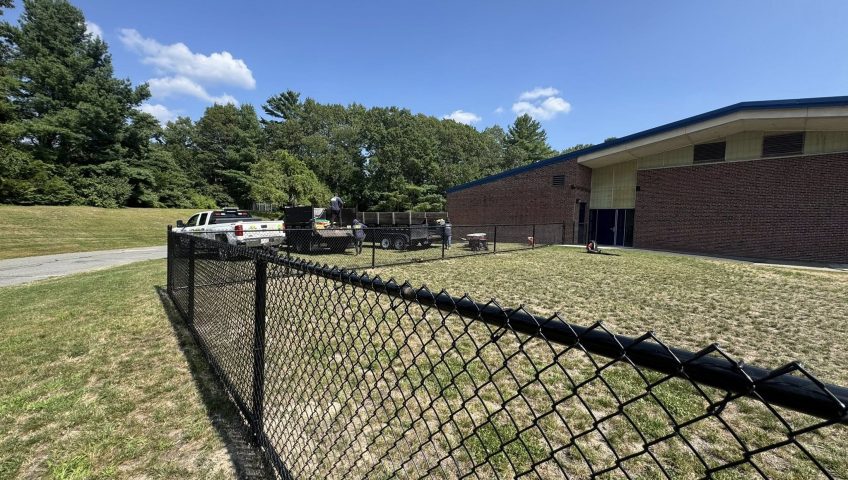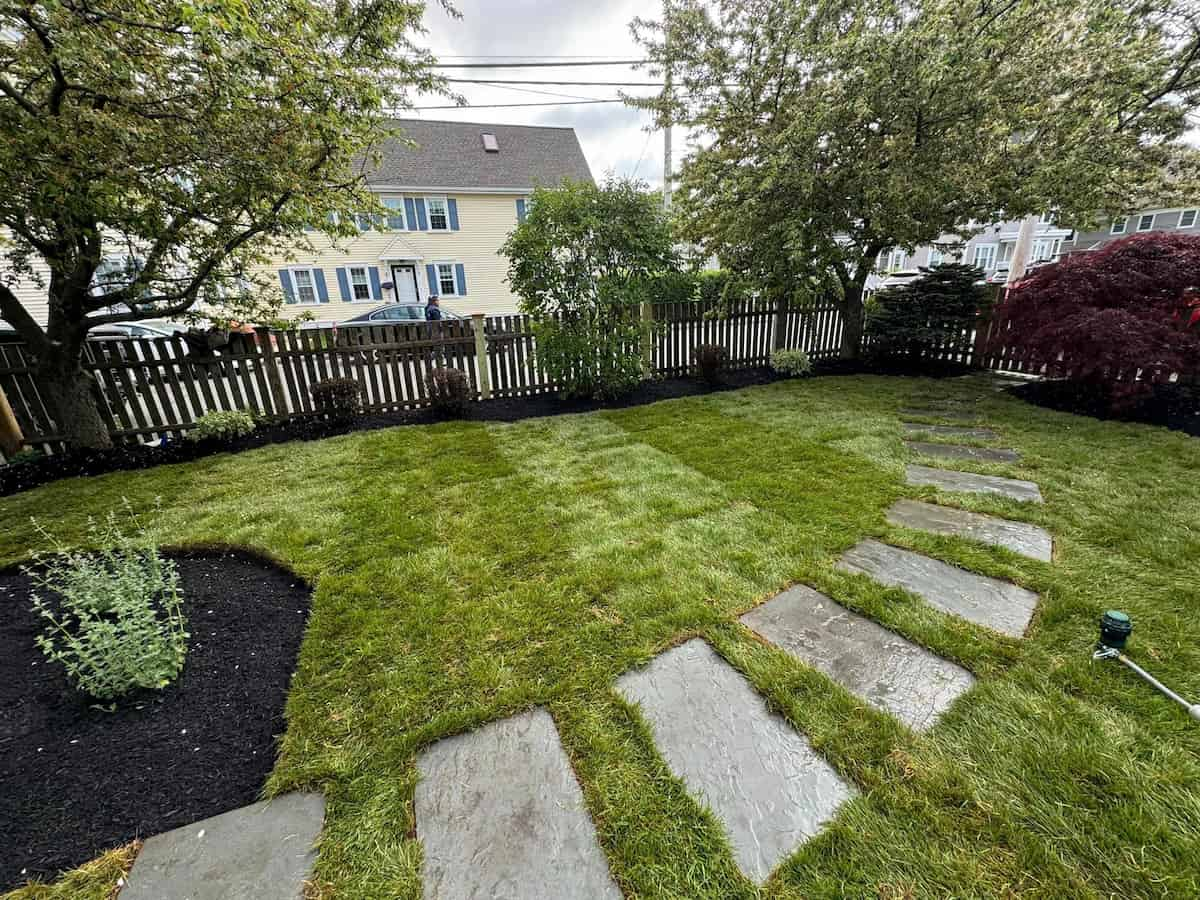Your home’s curb appeal starts at the front yard, and nothing makes a statement quite like the perfect front yard fence. Whether you’re looking to enhance privacy, improve security, or simply add aesthetic value to your property, choosing the right fencing solution requires careful consideration of materials, design, and professional installation techniques.
When it comes to transforming your outdoor space, New Generation Landscaping & Fence in Peabody, MA brings years of expertise not only in fencing solutions but also in comprehensive exterior services including roofing, siding, and gutters. Their professional team understands how each element of your home’s exterior works together to create a cohesive and attractive appearance that stands the test of time.
Understanding Your Front Yard Fence Options
Selecting the ideal fencing material is crucial for achieving both functionality and visual appeal. Each material offers distinct advantages depending on your specific needs, budget, and aesthetic preferences.
Wood Fencing remains a classic choice for homeowners seeking natural beauty and versatility. Cedar and redwood varieties provide natural resistance to weather and insects, while pressure-treated pine offers an economical alternative. Wood fences can be customized with various styles, from traditional picket designs to modern horizontal slats.
Vinyl Fencing has gained popularity due to its low maintenance requirements and durability. Available in numerous colors and styles, vinyl fences resist fading, cracking, and warping. They’re particularly suitable for busy homeowners who want an attractive barrier without ongoing upkeep demands.
For those seeking a combination of strength and elegance, professional fence installation ensures your chosen material is properly secured and positioned for optimal performance and longevity.
Design Considerations for Maximum Curb Appeal
The design of your front yard fence should complement your home’s architectural style while serving its intended purpose. Consider the height requirements based on your privacy needs and local regulations, as most municipalities have specific restrictions for front yard installations.
Color coordination plays a vital role in creating visual harmony. Neutral tones like white, beige, or natural wood stains typically blend well with various home exteriors, while bold colors can create striking focal points when used thoughtfully.
Decorative elements can elevate a simple fence into a design feature. Post caps, lattice inserts, and scalloped tops add visual interest without compromising functionality. These details should reflect your home’s overall style, whether traditional, contemporary, or rustic.
Don’t overlook the importance of gate design and placement. Your entry gate creates the first impression for visitors and should be both welcoming and secure. Consider wider openings for easier access and automated systems for added convenience.
Explore various fence styles and materials to find the perfect match for your property’s unique character and functional requirements.
💡 Expert Tip: Front Yard Fence Planning
Before installation, walk your property line with a professional to identify underground utilities, understand setback requirements, and discuss drainage considerations. This preliminary assessment prevents costly mistakes and ensures compliance with local regulations.
Professional Installation vs. DIY: Making the Right Choice
While DIY fence installation might seem cost-effective initially, professional installation offers significant advantages that often justify the investment. Experienced installers possess specialized tools, knowledge of local building codes, and techniques that ensure proper alignment, spacing, and structural integrity.
Professional benefits include:
- Accurate property line surveying and marking
- Proper post spacing and depth calculations
- Knowledge of soil conditions and appropriate anchoring methods
- Understanding of drainage requirements and grading considerations
- Warranty coverage on both materials and workmanship
DIY installation challenges often include uneven post placement, inadequate foundation depth, and misalignment issues that become apparent over time. These problems can compromise both appearance and functionality, potentially requiring costly corrections.
Weather conditions also play a crucial role in installation timing and techniques. Professionals understand optimal conditions for concrete setting, soil compaction, and material handling, ensuring your fence performs reliably through seasonal changes.
For specialized materials like metal fences, professional expertise becomes even more critical due to welding requirements, proper fastening techniques, and corrosion prevention methods.
Beautiful front yard with professionally installed fence showcasing curb appeal
Cost Factors and Budget Planning
Understanding the various cost components helps in making informed decisions about your front yard fence investment. Material costs typically represent 40-60% of the total project expense, with labor, permits, and site preparation comprising the remainder.
Primary cost factors include:
- Linear footage and fence height
- Material selection and quality grade
- Terrain complexity and accessibility
- Gate requirements and hardware specifications
- Site preparation needs (clearing, grading, utility marking)
- Permit fees and inspection requirements
Geographic location significantly impacts both material and labor costs. Urban areas typically have higher labor rates but may offer more material options and competitive pricing. Rural locations might have lower labor costs but increased material transportation expenses.
Seasonal timing can affect both pricing and availability. Spring and summer represent peak installation seasons, potentially leading to higher costs and extended scheduling. Fall and winter installations may offer cost advantages but could face weather-related delays.
Consider aluminum fence options for properties requiring both durability and sophisticated appearance, as they often provide excellent long-term value despite higher initial investment.
Maintenance Requirements by Fence Type
Different fencing materials have varying maintenance needs that should factor into your decision-making process. Understanding these requirements helps ensure your fence maintains its appearance and functionality throughout its lifespan.
Wood Fence Maintenance involves annual inspections for loose boards, damaged posts, and signs of insect damage. Regular staining or sealing every 2-3 years protects against weather damage and extends lifespan. Prompt replacement of damaged components prevents structural issues from spreading.
Vinyl Fence Care primarily involves periodic cleaning with soap and water to remove dirt and mildew. While vinyl doesn’t require painting or staining, sun exposure can cause color fading over time. Inspect hardware connections annually and tighten as needed.
Metal Fence Upkeep varies by material type. Aluminum requires minimal maintenance beyond occasional cleaning and hardware inspection. Steel fences need rust prevention through regular painting or protective coating application, particularly in coastal environments.
For extensive commercial properties, explore commercial fence solutions designed to handle higher traffic and extended exposure while maintaining professional appearance.
Local Regulations and Permit Requirements
Before beginning any fence installation project, familiarize yourself with local zoning regulations and permit requirements. Most municipalities have specific rules governing front yard fence height, setback distances, and approved materials.
Common regulations include:
- Maximum height restrictions (typically 3-4 feet for front yards)
- Setback requirements from property lines and sidewalks
- Sight line provisions at intersections and driveways
- Material restrictions in historic districts
- HOA architectural review requirements
Permit applications usually require site plans showing proposed fence location, specifications for materials and height, and sometimes neighbor notification procedures. Processing times vary but typically range from 1-4 weeks depending on local workload and project complexity.
Professional fence installers familiar with local regulations can navigate permit processes efficiently and ensure compliance with all applicable codes. This expertise prevents costly modifications or removal orders after installation completion.
Consider vinyl fence installation for areas with strict appearance standards, as vinyl options often meet HOA requirements while providing excellent durability and minimal maintenance needs.
Front Yard Fence Selection Process
Step 1
Assess Needs
Privacy, security, curb appeal, budget considerations
Step 2
Research Options
Materials, styles, local regulations, contractor reviews
Step 3
Professional Install
Site prep, proper installation, quality assurance
Frequently Asked Questions
Q: How tall can a front yard fence be?
A: Most municipalities restrict front yard fences to 3-4 feet in height, though specific regulations vary by location. Check with your local building department for exact requirements in your area, as some zones may allow taller fences with special permits.
Q: Do I need a permit for front yard fence installation?
A: Permit requirements vary by municipality and fence specifications. Many areas require permits for fences over a certain height or those located within setback areas. Contact your local building department or work with a professional installer familiar with local regulations.
Q: Which fence material offers the best value for front yards?
A: Value depends on your priorities. Vinyl offers excellent long-term value through low maintenance and durability. Wood provides natural beauty at moderate cost but requires ongoing care. Aluminum delivers premium appearance and longevity but at higher initial investment.
Q: How long does professional fence installation typically take?
A: Installation timeframes vary based on project size, material type, and site conditions. Most residential front yard fences can be completed in 1-3 days, though complex projects or challenging terrain may require additional time. Weather conditions can also affect scheduling.
Ready to Transform Your Front Yard?
Get expert guidance on selecting and installing the perfect front yard fence for your property. New Generation Landscaping & Fence brings professional expertise and quality craftsmanship to every project.
Serving Peabody, MA and surrounding areas • Licensed & Insured

